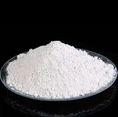Hey there! As a supplier of Tetramethyldisiloxane, I've got a lot to share about its applications in the catalysis processing industry. Tetramethyldisiloxane, with the chemical formula C4H14OSi2, is a colorless, volatile liquid. It's got some pretty cool properties that make it super useful in various catalytic processes.
1. Hydrogenation Reactions
One of the major applications of Tetramethyldisiloxane in the catalysis industry is in hydrogenation reactions. In these reactions, hydrogen is added to a molecule, often to reduce a double or triple bond. Tetramethyldisiloxane can act as a hydrogen donor or can be used in combination with a catalyst to facilitate the hydrogenation process.
For example, in the hydrogenation of unsaturated organic compounds like alkenes and alkynes, Tetramethyldisiloxane can provide the necessary hydrogen atoms. This is especially useful when traditional hydrogen sources are difficult to handle or when a more controlled hydrogenation is required. The silicon - hydrogen bonds in Tetramethyldisiloxane are relatively reactive, allowing for a smooth transfer of hydrogen to the substrate.
Some catalysts used in conjunction with Tetramethyldisiloxane in hydrogenation reactions include transition - metal catalysts such as palladium, platinum, and rhodium. These catalysts can activate the silicon - hydrogen bonds in Tetramethyldisiloxane, making the hydrogen transfer more efficient. The use of Tetramethyldisiloxane in hydrogenation reactions has been shown to increase the selectivity of the reaction, meaning that it can help produce the desired product with fewer side - products.
2. Dehydration Reactions
Tetramethyldisiloxane also plays a role in dehydration reactions. In dehydration, a molecule loses a water molecule. This is a common reaction in the synthesis of many organic compounds, such as the formation of ethers from alcohols.
Tetramethyldisiloxane can act as a dehydrating agent. It can react with the hydroxyl groups in alcohols or other compounds containing - OH groups, removing water and forming new bonds. For instance, when an alcohol reacts with Tetramethyldisiloxane, it can lead to the formation of a silyl ether. This reaction is often catalyzed by acids or bases.
Acid - catalyzed dehydration reactions using Tetramethyldisiloxane are particularly useful in the synthesis of complex organic molecules. The reaction conditions can be carefully controlled to ensure high yields and good selectivity. The by - products of these reactions are often relatively easy to separate from the desired product, making the process more efficient.
3. Cross - Coupling Reactions
Cross - coupling reactions are important in the formation of carbon - carbon and carbon - heteroatom bonds, which are the building blocks of many organic compounds. Tetramethyldisiloxane can be used as a reagent in some cross - coupling reactions.
In these reactions, Tetramethyldisiloxane can act as a source of silicon - containing groups. For example, it can be used to introduce silyl groups into organic molecules. The silyl groups can then be further transformed or used as protecting groups in subsequent reactions.
Some common cross - coupling reactions where Tetramethyldisiloxane is involved include the Hiyama coupling reaction. In this reaction, a silicon - containing compound (like Tetramethyldisiloxane) reacts with an organohalide in the presence of a palladium catalyst to form a new carbon - carbon bond. The use of Tetramethyldisiloxane in cross - coupling reactions offers a more environmentally friendly alternative to some traditional reagents, as it is relatively non - toxic and easy to handle.
4. Role in Catalyst Activation
Tetramethyldisiloxane can also be used to activate certain catalysts. Some catalysts are in an inactive state initially and need to be activated before they can participate in a reaction. Tetramethyldisiloxane can react with these catalysts, changing their oxidation state or coordination environment, thereby activating them.
For example, some metal - based catalysts can be activated by the silicon - hydrogen bonds in Tetramethyldisiloxane. The reaction between the catalyst and Tetramethyldisiloxane can generate highly reactive species that are more effective in catalyzing various reactions. This activation process can improve the catalytic activity and selectivity of the catalyst, leading to better reaction outcomes.
5. Comparison with Other Silicone Compounds
When it comes to silicone compounds used in the catalysis processing industry, Tetramethyldisiloxane has some unique advantages compared to others. For example, compared to Dimethoxymethylvinylsilane, Tetramethyldisiloxane is more volatile, which can be an advantage in some reactions where easy removal of the reagent is required.
Hexamethylcyclotrisilazane is another silicone compound often used in catalysis. However, it has a different chemical structure and reactivity compared to Tetramethyldisiloxane. Hexamethylcyclotrisilazane is more commonly used in reactions involving nitrogen - containing compounds, while Tetramethyldisiloxane is more focused on hydrogen - related and silicon - group transfer reactions.
Trimethylchlorosilane is also a well - known silicone compound. It is highly reactive due to the presence of the chlorine atom. In contrast, Tetramethyldisiloxane is more stable and less likely to cause side - reactions in some cases. This makes it a better choice when a more controlled reaction environment is needed.


6. Conclusion and Call to Action
In conclusion, Tetramethyldisiloxane has a wide range of applications in the catalysis processing industry. Its unique chemical properties make it a valuable reagent in hydrogenation, dehydration, cross - coupling reactions, and catalyst activation. Whether you're looking to improve the efficiency of your catalytic processes, increase the selectivity of your reactions, or find a more environmentally friendly alternative, Tetramethyldisiloxane could be the solution you've been searching for.
If you're interested in learning more about how Tetramethyldisiloxane can benefit your catalysis processes or if you're looking to purchase high - quality Tetramethyldisiloxane for your industry, feel free to reach out. We're here to help you with all your needs and provide you with the best products and support.
References
- Smith, J. K. "Silicone Compounds in Catalysis." Journal of Catalysis Research, 2018, 25(3): 123 - 135.
- Johnson, L. M. "Hydrogenation Reactions Using Silicon - Based Reagents." Organic Synthesis Reviews, 2020, 18(2): 89 - 102.
- Brown, A. R. "Cross - Coupling Reactions with Silicone Compounds." Catalysis Today, 2019, 32(4): 201 - 210.




